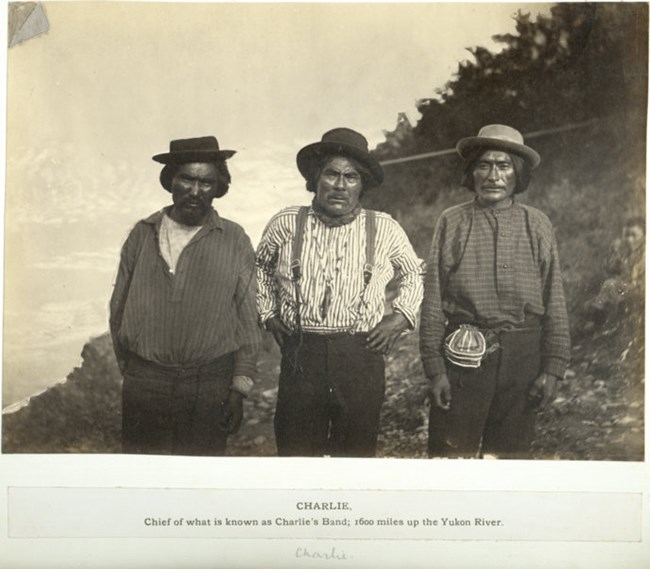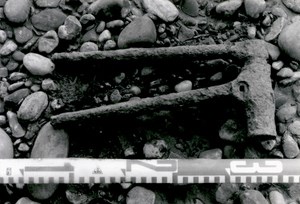|
Yukon-Charley Rivers National Preserve is named for the two great rivers that are in many ways the focal points of the preserve. Upstream of the Charley River, the Kandik River, once called Charley Creek, flows into the Yukon. Near this confluence there was once an important village site, the historic home of Chief Charley and his Han Gwich'in Athabaskan followers. According to the historic accounts of the Episcopal archdeacon Hudson Stuck, "phenomenally high water" resulting from spring breakup on the Yukon in 1914 washed away the last remnants of a small cluster of houses near the mouth of the Kandik River. The former occupants of these houses are said to have then scattered to other villages up and down the Yukon, but the place once known as Charley's Village was ultimately destroyed. A small assemblage of artifacts is held in the Yukon-Charley Rivers National Preserve museum collections. Fortunately, Charley and the village that bears his name achieved a certain notoriety in the history of the Yukon-Charley region. The resulting historic accounts serve in a way to breath new life into what might otherwise be rather mundane archaeological finds. Such research provides us an opportunity to learn more about this particular segment of Han history. This web exhibit explores the history of the site itself as well as the various efforts to identify, record, and interpret what was Charley's Village. The links below allow you to examine some of the artifacts and events associated with these efforts. If you have any questions or comments regarding this exhibit please feel free to contact the Park Curator. |
Last updated: August 31, 2022



